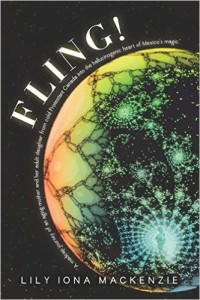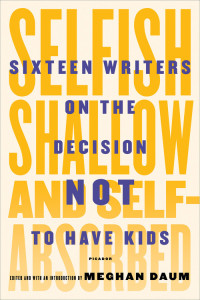Rose’s Run, by Dawn Dumont (Thistledown Press, 2014)
 Dawn Dumont is a professional comedian, so you might expect Rose’s Run, her second novel, to be funny—and it is. But the book has a serious side too, tackling women’s issue and both daily realities and ingrained stereotypes of native life in Canada. Rose Okanese is a mother of two young girls on a fictional reserve in Saskatchewan. Although she’s been to university, Rose works at a pig farm and spends her evenings at the bingo hall. When she returns home one evening to find her husband in bed with her cousin, Rose throws him out and resurrects old running skills to chase her cousin down. The following day, Rose loses her job. She applies for welfare at the band office and meets the alluring and athletic new Chief, Taylor. Through attempts to impress and maintain dignity, Rose lands a job as social administrator and (much to her horror) commits to running a marathon. But as she juggles mothering two girls, caring for a pregnant friend (whose husband has also strayed), her new job, and a punishing training program, another problem arises—literally. Rose’s teenage daughter, Sarah, along with a pot-smoking friend, unearth a mysterious Dream Woman from an unmarked grave. The woman, a sort of feminist wihtikow, begins to possess local women, compelling them to take revenge on their wayward men. Rose must put her newfound strength—physical, mental and spiritual—to the test. Like a swift morning run, Dumont’s book is both challenging and exhilarating.
Dawn Dumont is a professional comedian, so you might expect Rose’s Run, her second novel, to be funny—and it is. But the book has a serious side too, tackling women’s issue and both daily realities and ingrained stereotypes of native life in Canada. Rose Okanese is a mother of two young girls on a fictional reserve in Saskatchewan. Although she’s been to university, Rose works at a pig farm and spends her evenings at the bingo hall. When she returns home one evening to find her husband in bed with her cousin, Rose throws him out and resurrects old running skills to chase her cousin down. The following day, Rose loses her job. She applies for welfare at the band office and meets the alluring and athletic new Chief, Taylor. Through attempts to impress and maintain dignity, Rose lands a job as social administrator and (much to her horror) commits to running a marathon. But as she juggles mothering two girls, caring for a pregnant friend (whose husband has also strayed), her new job, and a punishing training program, another problem arises—literally. Rose’s teenage daughter, Sarah, along with a pot-smoking friend, unearth a mysterious Dream Woman from an unmarked grave. The woman, a sort of feminist wihtikow, begins to possess local women, compelling them to take revenge on their wayward men. Rose must put her newfound strength—physical, mental and spiritual—to the test. Like a swift morning run, Dumont’s book is both challenging and exhilarating.
Fling! by Lily Iona MacKenzie (Pen-L Publishing, 2015)
 Fling!, Lily Iona MacKenzie’s debut novel, spans two continents, three generations of Heathers, and multiple layers of reality. In 1906, Heather McGregor is born in the Isle of Skye—or is not born, exactly, but dances off a painting and into a potato patch. Heather grows (more robust than the potatoes), marries a MacDonald, and moves to Calgary. There she gives birth to another Heather, later known as Bubbles, who in turn gives birth to her own Heather, known as Feather. But Heather Number One doesn’t stick around “cold Protestant” Canada for long. She flees with an employer to a wild and mysterious life in Mexico. Many years later, Bubbles, a sprightly ninety when the novel opens, decides she and Feather must follow in Heather’s footsteps—not vanish into Mexico but simply retrieve Heather’s long lost ashes and perhaps discover what tempted her mother to leave family behind forever. Of course, Feather and Bubbles discover much more: sex, drugs, shamans, a very vital statue, and living, dancing long-dead relatives—including Heather, still wild and spry and generous with motherly advice. With a light but practised hand, MacKenzie weaves the rich traditions of Skye with the myths and magic of Mexico (and a rather modest portrayal of her hometown Calgary) to explore motherhood, the ties that bind generations of women—and perhaps the secret to happiness itself.
Fling!, Lily Iona MacKenzie’s debut novel, spans two continents, three generations of Heathers, and multiple layers of reality. In 1906, Heather McGregor is born in the Isle of Skye—or is not born, exactly, but dances off a painting and into a potato patch. Heather grows (more robust than the potatoes), marries a MacDonald, and moves to Calgary. There she gives birth to another Heather, later known as Bubbles, who in turn gives birth to her own Heather, known as Feather. But Heather Number One doesn’t stick around “cold Protestant” Canada for long. She flees with an employer to a wild and mysterious life in Mexico. Many years later, Bubbles, a sprightly ninety when the novel opens, decides she and Feather must follow in Heather’s footsteps—not vanish into Mexico but simply retrieve Heather’s long lost ashes and perhaps discover what tempted her mother to leave family behind forever. Of course, Feather and Bubbles discover much more: sex, drugs, shamans, a very vital statue, and living, dancing long-dead relatives—including Heather, still wild and spry and generous with motherly advice. With a light but practised hand, MacKenzie weaves the rich traditions of Skye with the myths and magic of Mexico (and a rather modest portrayal of her hometown Calgary) to explore motherhood, the ties that bind generations of women—and perhaps the secret to happiness itself.
Shallow, Selfish and Self-Absorbed: Sixteen Writers on the Decision Not to Have Kids, edited by Meghan Daum (Picador, 2015)
 “Why’d you decide to have kids?” We rarely hear this. More often, women—and some men—who do not have kids must account for their childless status and fend off the “standard barbs” that give this collection of essays its title. Editor Meghan Daum aims to show, however, “that there are just as many ways of being a nonparent as there are of being a parent. You can do it lazily and self-servingly or you can do it generously and imaginatively.” Indeed, several contributors make little effort to dispel the selfish label. Staying out late, sleeping in and travel are cited as benefits of the child-free life. But the notion that childless equals freedom while parenthood equals drudgery, “trekking in Bhutan” versus “folding onesies,” as Pam Houston puts it, seems far too tidy. Many contributors explore more nuanced, diverse and compelling reasons for their choices. Lauren Kipnis, among others, tackles the notion that human reproduction is biologically or socially necessary, that we must have kids to be fully human. If this is not the case, and surely it isn’t, positions like Geoff Dwyer’s—I don’t have kids because I’m not interested in kids—seem valid and sufficient. Yet most contributors have thought long and hard about parenting. Some wanted children but never found the right time, place or partner: more childless by circumstance than childless by choice. Perhaps the most poignant essays are from writers who have examined their own lives and decided they simply cannot be a parent. Paul Lisicky writes beautifully of a time when gay men like him died in their twenties and thirties. On parenting he says: “It is easier than you think to be indifferent to what you’ve been told you can’t have.” Sigrid Nunez begins her essay: “There was a time during my childhood when I believed that all children were unwanted.” She writes of her own mother and the parents she knew growing up: their dominant emotion was anger; hers was fear. Nunez says she could not be a real mother, “not the kind I would have wanted for my child.” No one reader could empathize with all views presented here; some are even hard to like. But Daum succeeds in presenting both diversity of experience and fabulous writing, and the essays will no doubt evoke deep feeling—anguish, rage, camaraderie, surprise—in parents and nonparents alike. What more could one want from a book?
“Why’d you decide to have kids?” We rarely hear this. More often, women—and some men—who do not have kids must account for their childless status and fend off the “standard barbs” that give this collection of essays its title. Editor Meghan Daum aims to show, however, “that there are just as many ways of being a nonparent as there are of being a parent. You can do it lazily and self-servingly or you can do it generously and imaginatively.” Indeed, several contributors make little effort to dispel the selfish label. Staying out late, sleeping in and travel are cited as benefits of the child-free life. But the notion that childless equals freedom while parenthood equals drudgery, “trekking in Bhutan” versus “folding onesies,” as Pam Houston puts it, seems far too tidy. Many contributors explore more nuanced, diverse and compelling reasons for their choices. Lauren Kipnis, among others, tackles the notion that human reproduction is biologically or socially necessary, that we must have kids to be fully human. If this is not the case, and surely it isn’t, positions like Geoff Dwyer’s—I don’t have kids because I’m not interested in kids—seem valid and sufficient. Yet most contributors have thought long and hard about parenting. Some wanted children but never found the right time, place or partner: more childless by circumstance than childless by choice. Perhaps the most poignant essays are from writers who have examined their own lives and decided they simply cannot be a parent. Paul Lisicky writes beautifully of a time when gay men like him died in their twenties and thirties. On parenting he says: “It is easier than you think to be indifferent to what you’ve been told you can’t have.” Sigrid Nunez begins her essay: “There was a time during my childhood when I believed that all children were unwanted.” She writes of her own mother and the parents she knew growing up: their dominant emotion was anger; hers was fear. Nunez says she could not be a real mother, “not the kind I would have wanted for my child.” No one reader could empathize with all views presented here; some are even hard to like. But Daum succeeds in presenting both diversity of experience and fabulous writing, and the essays will no doubt evoke deep feeling—anguish, rage, camaraderie, surprise—in parents and nonparents alike. What more could one want from a book?
*
Understorey Magazine is a project of the Second Story Women’s Centre and a registered charity. If you like what you see here, please share with friends and consider making a donation. Thank you.

